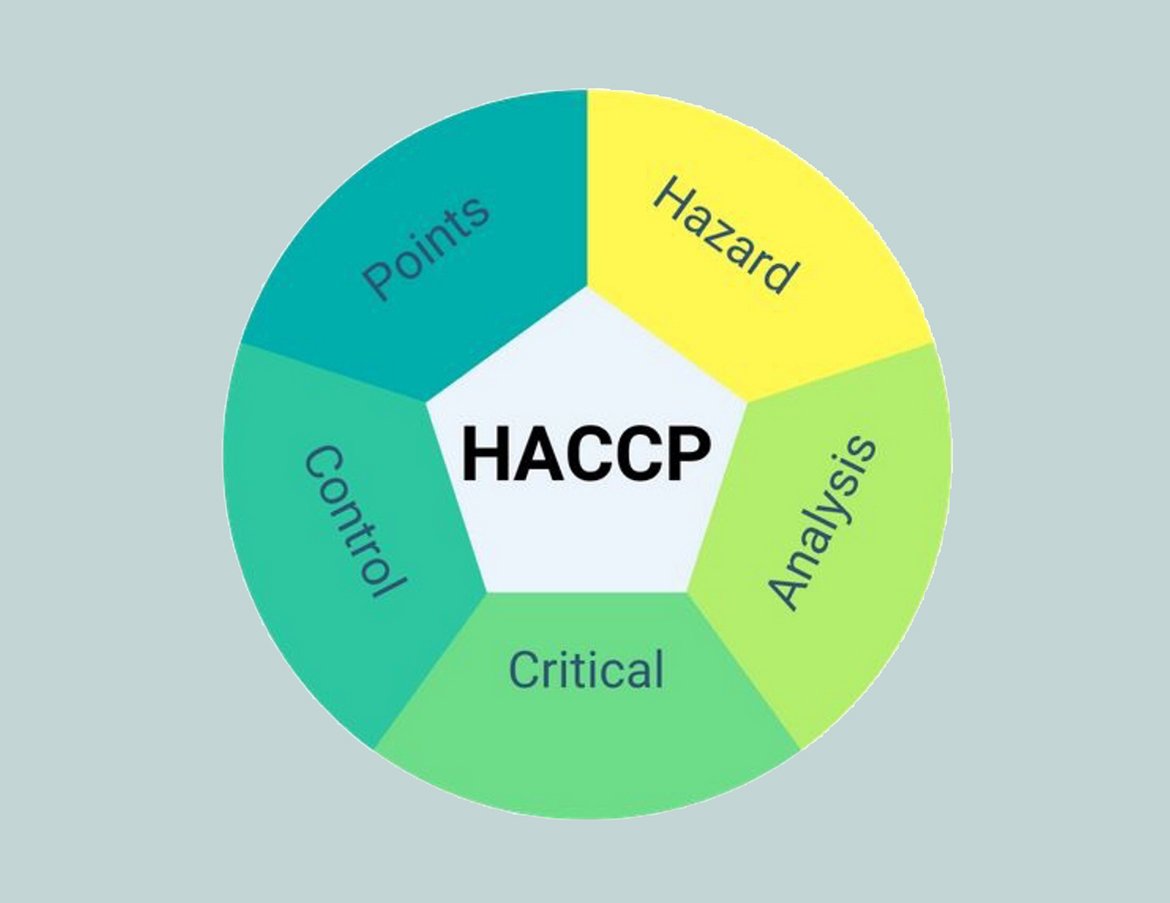Introduction
HACCP is a systematic and preventive approach in the food industry for identifying food safety hazards that may cause unsafe food at all stages of the food supply chain from production, packaging, distribution, preparation and serving to the customer. In its proactive approach, rather than relying on inspection of the finished product, control measures will be applied to control or eliminate the chemical, physical, biological and allergic hazards.
Advantages of HACCP
- More control on food processing
- More control on food costs
- Reduce food wastes
- Improve the quality of foods
- Prevent any complaints and legal actions
- Customer protection
- Customer Satisfaction
The seven principles of HACCP
- Hazard Identification
- Critical Control Point (CCP) identification
- Critical limits establishment for the CCPs
- CCP monitoring
- Corrective action is established when a CCP is out of control
- Regular verification on measures
- Documents and records establishment to demonstrate effective application of the measures.
Application of the seven principles
1. Hazard Analysis
1.1. Assembly of a multidisciplinary team (HACCP team)
It includes the whole range of specific knowledge and expertise from all parts of a business
1.2. Description of the product
It includes composition (e.g. ingredients), structure (e.g. Solid), processing (e.g. smoking), packaging (e.g. vacuum), storage and distribution conditions, required shelf life, instructions for use and any microbiological or chemical criteria applicable.
1.3. Identification of intended use
It defines the intended use of the product by the customers and if it is suitable for particular customers such as travellers or vulnerable people.
1.4. Develop a flow diagram
It is a description of all steps involved in the process from receiving the raw materials to distribution of the finished food to the market in sequence supported by sufficient technical data
1.5. Listing hazards and existing control measures
List all potential expected to occur at each process step and identify the current control measure to eliminate or control them
2. Identification of Critical Control Points (CCP)
A logical approach facilitated by the use of a decision tree or other methods is applied in the identification of CCPs. At each step of the flow diagram, the decision tree must be applied to each hazard that may be reasonably expected to occur or be introduced and each control measure identified.
3. Determine Critical Limits at CCPs
Critical limits for each control measure associated with a CCP is to be determined. They are determined as acceptable limit values of the measurable parameters which is considered for controlling the control points.
The critical limits may be derived from a variety of sources such as legislations, guides of GHP (Good Hygiene Practices) and etc.
4. Monitoring Procedures at CCPs
Monitoring procedure at each critical point to ensure compliance with specified critical limits.
This monitoring procedure is to detect any out of control observations or measurements as evidence of a situation that needs to be resolved by implementing the required process adjustment and corrective actions.
5. Corrective Actions
The corrective action to eliminate or control the hazard needs to be taken when monitoring results indicate a deviation from the critical limit. The corrective actions are to include root cause, required actions, responsible person(s) and due date.
6. Verification Procedures
In order to verify if the HACCP is working correctly. Verification procedures may include random sampling and analysis, reinforced analysis or tests at selected critical points, intensified analysis of intermediate or final products, and surveys on the actual condition during storage, distribution and sale and on actual use of the product.
7. Documentation and Record-Keeping
Effective and accurate record-keeping is essential and to be appropriate to the nature and size of the operation and sufficient.
8. Training
The food business is to ensure that all personnel are aware of the hazards identified (if any), the critical points and the control measures and any corrective actions.
How ISO Consulting Services can help you
Please fill out the Questionnaire or contact us if you need more details on how our expert team can assist you in training, development. auditing and certifying your HACCP system.
Our expertise is to help our clients develop, implement, certify and maintain their management system through a hassle-free process and with a…
Read MoreThe National Disability Insurance Scheme (NDIS) provides about 460,000 Australians under the age of 65 with a permanent and significant disability with…
Read MoreAs the aged population is growing in Australia, the need for a range of care, accommodation, hospitality, and other services is undeniable. To address this growth…
Read More







